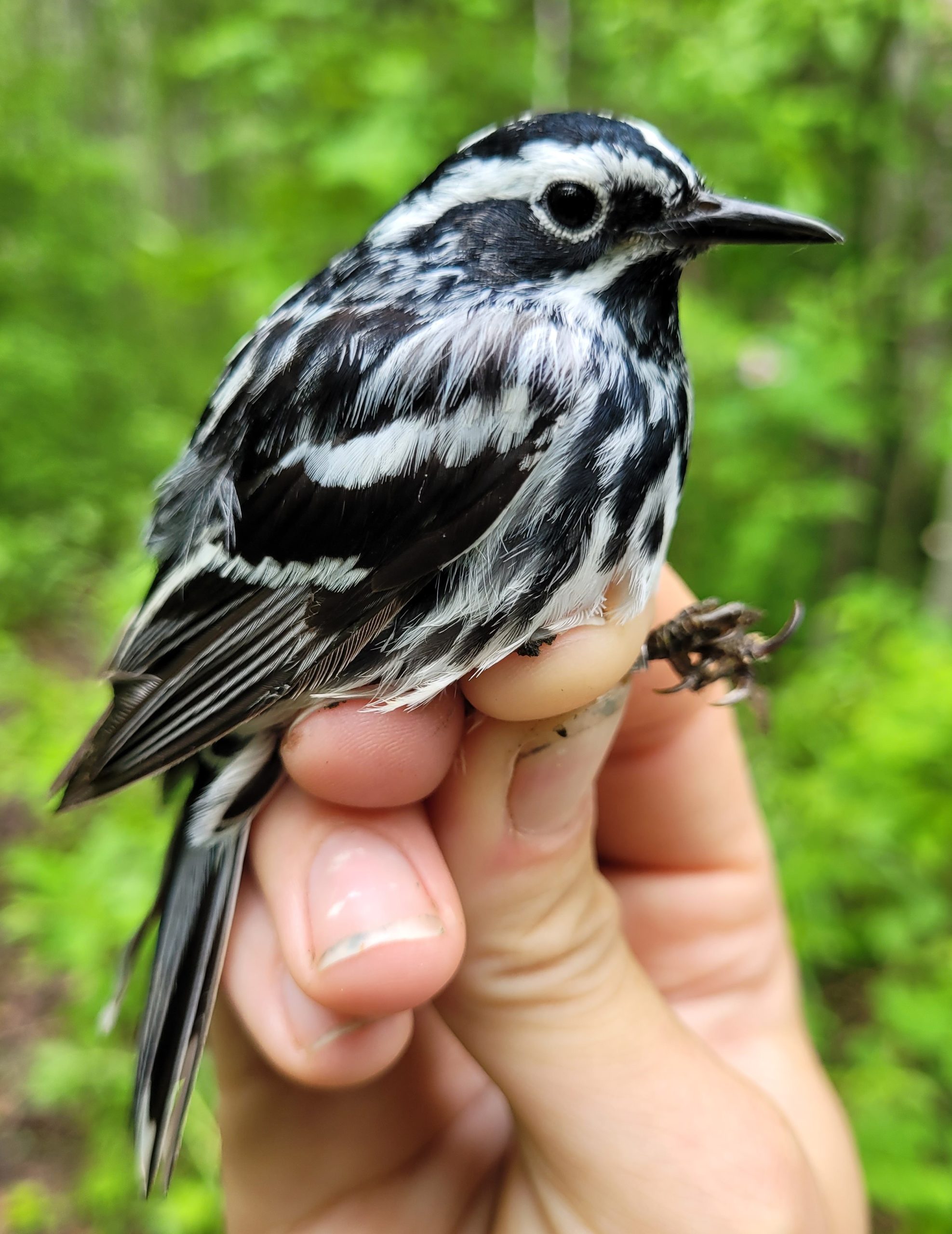Believe it or not, the Lesser Slave Lake Bird Observatory began tracking southward bird migration on July 12. The first week of Fall Migration Monitoring was slow with captures and observations of baby birds and their parents many, but observations of clear migration few.
Already a shift has begun. More and more we are seeing birds flit overhead on a mission. Another sign that migration has begun comes from our nets. If birds were not moving, we would expect to see relatively few unbanded birds and recaptures would be common. Already the number of new bands is creeping steadily up, and the number of daily recaptures is trending down.
Our Fall Migration Monitoring program is often busier than Spring Migration Monitoring for the fact that there are simply more birds around to catch after breeding adults have fledged their chicks. For example, although it is uncommon, Black-and-white Warblers can have two sets of young in a year with each set containing four to six eggs! Despite just starting our Fall program, already we have banded 513 of 33 species.

Sadly, many of these young birds will not survive their first year. One recent study on GPS-tagged Black Kites (a species of raptor that migrates between Europe and Africa) found as much as 60% of young Kites died in their first year. The oldest birds were also at risk after expending so much energy on their young as old individuals that died fledged twice the number of young as surviving Kites of the same age. Most of these deaths were on the southward migration, which stresses how difficult the next few months are for our birds.
Although a continent away, many of these findings can be applied locally. When we compare our fall data to that of our spring, we see that many young birds never return. Migration is incredibly difficult and any mistake can turn deadly. Although young, inexperienced birds are most likely to make mistakes, even old birds can fall victim. And by old, we are not thinking two or three years as the maximum lifespan that is often guessed for such small creatures – the oldest known Black-and-white Warbler was 11 years and 3 months old.
So many birds have so much to learn right now and with ongoing steady declines of bird populations, we humans should take extra precautions over the next few months to make sure more of these birds can return to us and breed next year. The easiest ways to do this is to keep our cats indoors with supervised time outdoors on a leash. Every year between 100 to 250 million birds are killed by cats in Canada. Just half an hour a day of playing with your cat can be enough enrichment that they gradually quit begging at the door. Additionally, 16 to 42 million birds succumb to window collisions yearly in Canada. If you have a deadly window, check out window treatments such as Feather Friendly tape.
By Robyn Perkins, LSLBO Bander-in-Charge
